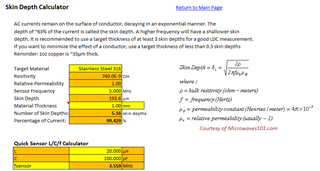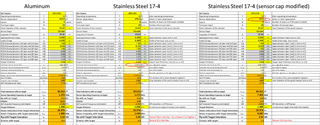Hello,
I need to use the LDC1101 to sense the distance to a target. The LDC1101 will be 1 mm away from the target and the target can move 3 mm away from the sensor. I have tested the same setup with an aluminum target and the results are good. Now I need to change the target material from aluminum to 17-4 stainless steel. Are there any considerations that I need to take into account given the higher resistivity of stainless steel as compared to aluminum or should I expect similar results? I would like to avoid any pitfalls ahead of time.
Thanks,
Narek




